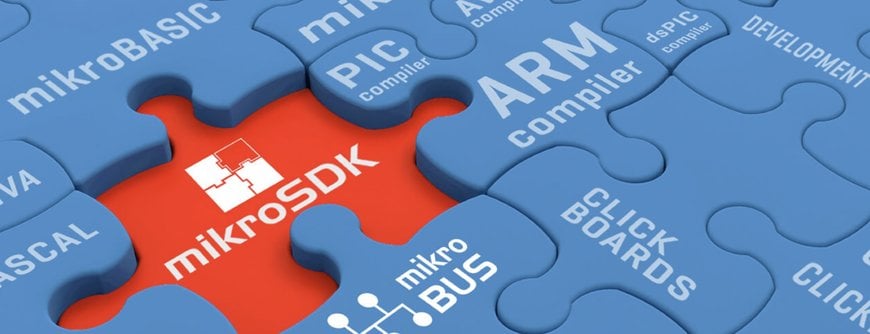electronics-journal.com
13
'21
Written on Modified on
MIKROE adds supports for NXP Kinesis MCUs to 'universal' mikroSDK software development kit
Cross-platform SDK for embedded applications - Learn once, code anywhere: 8bit - 32bit; ARM, Microchip, TI, STM & more.

MikroElektronika (MIKROE), the embedded solutions company that dramatically cuts development time by providing innovative hardware and software products based on proven standards, has announced that its multi-architectural software development kit, mikroSDK 2.0, now supports 147 MCUs from leading embedded IC maker, NXP. mikroSDK is a collection of open-source software libraries with unified API and software development tools that makes application code portable and reusable on many different platforms and architectures, with virtually no code changes.
The addition of NXP's Kinetis family takes the number of MCUs supported by mikroSDK 2.0 to over 1500, ranging from small 8bit to 32bit devices. Other notable product families covered include PIC and PIC32 by Microchip and the 849-strong STM32 family from STMicroelectronics. New devices and architectures are being added all the time.
Comments Nebojsa Matic, CEO at MIKROE: “It doesn't matter if you are currently evaluating PIC, falling in love with ARM, or just interested in a new architecture on the market. mikroSDK means that the application code will run on the architecture of your choice. Choose any supported host board and there is no need to change a single line of code."
mikroSDK 2.0 is a complete, cross-platform software development kit for embedded applications providing everything necessary to start developing, and prototyping, including Click board™ applications and GUIs for embedded devices. Rapid software development is easily achieved as developers do not need to consider low-level code, freeing them up to focus on the application code itself.
This means that changing the MCU or even the whole platform will not require developers to redevelop their code for the new MCU or platform. They can simply switch to the desired platform, apply the correct board definition file, and the application code will continue to run after a single compiling. Read the whitepaper here.
www.mikroe.com

